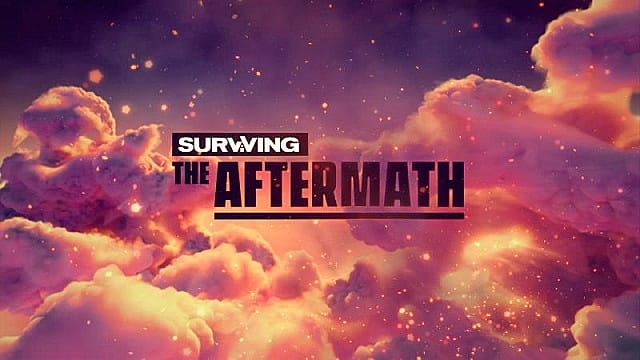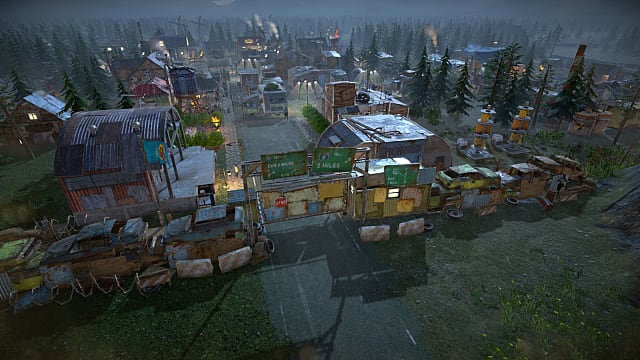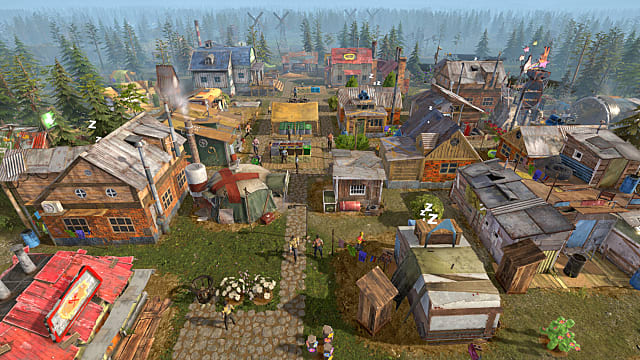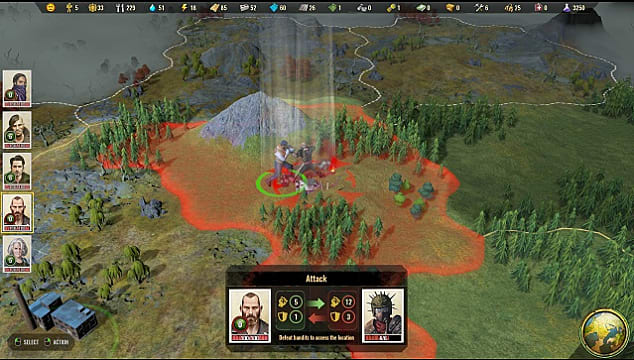It still feels very early in the game’s development cycle, but Surviving the Aftermath seems like it could shape up to be a pretty fun colony builder — and a nice way for you to spend some time conquering the apocalypse.
It’s All Come Tumbling Down
Surviving the Aftermath brings plenty of new tricks to the table. Here’s the setup: a catastrophic event has occurred, killing most of the Earth’s population and contaminating a lot of usable land. You are in charge of a small colony of survivors, and you need to manage your resources, expand your settlement, fight off bandits, and make tough decisions about how to withstand the challenging environment you’re stuck in.
You do this by building a variety of structures, each offering up different purposes and resources. You can salvage some finite resources from the map around you, but disasters and bandit attacks can occur, and, of course, they cause setbacks. Every type of resource is vital once you get far enough along, so any disruption to your supply chain can have dire consequences if you can’t fix them quickly enough.
My first taste of this bitter reality came when my colony became enveloped in radioactive fallout for an extended period. I had neglected my medical supplies, as my colonists had been fairly healthy up until that point. Before I knew it, radiation poisoning was wreaking havoc on the population. About a quarter of my working citizens died before I could get it under control — it took a long, long time to recover after that.
End of the Line
Surviving the Aftermath tries to carve out a little niche for itself in a crowded genre. It isn’t overtly funny, but it isn’t nearly as bleak as something like Frostpunk. It’s a bit more Mad Max and Fallout, but it’s set in the familiar, engine-building colony management genre we’re pretty familiar with.
One way it tries to add a bit of a wrinkle into things is by including a world map. Fairly early on, you can construct your colony’s gate. This will achieve a few different things for you: it will allow more random-decision events (traders will come to your camp or nomads looking for a home will come knocking), and it will give you the option to send explorers out into the world.
A few of your citizens are unique, too, and they can explore the world around you. As you survey territories, you can hunt for supplies, fight bandits, pick up technology that allows you to develop new buildings, and so on.
As of right now, the exploration portion of Surviving the Aftermath feels… underwhelming. You’re very removed from any of the action; battling bandits plays like Civilization, where you just run your more powerful units into their weaker units a few times until it dies.
At the moment, this is a critical flaw in Surviving the Aftermath because you must continually swap back and forth between the world map and your colony. If the world map is going to remain as hands-off as it currently is, it would be nice if there was a level of automation to it. I would only like to be pulled in for a big decision or an injured explorer. If the developers what to keep it as is, it would be nice to add some sort of minigame or an extra level of interaction to the world map.
Just clicking on things doesn’t add anything when players are trying to build a humming colony.
One Man’s Trash, Another Man’s Treasure
Colony simulation is a pretty crowded genre at this point, so there are some definite similarities to be drawn between Surviving the Aftermath and its cohorts.
The game Surviving the Aftermath closest resembles is Banished: you have a small number of colonists, you set up buildings in very similar ways, and many of your resources are the same. It’s tough more for the world it puts you in rather than figuring out what you need to do.
That said, there’s already quite a bit more to do in this game than in Banished. If it continues to fill out through Early Access (the developers already have a reasonably robust roadmap for improvements), this is definitely a colony sim you could sink your teeth into and lose plenty of hours with.
It doesn’t have to be particularly challenging, either; when you start a new game, there are several options to pick from that adjust how difficult the game will be. Things like starting resources, frequency of catastrophes, and the number of bandits all get adjusted before you begin. You can also see how much each option will affect the difficulty level by means of a percentage counter.
One aspect that struck me while playing Surviving the Aftermath was how taxing it was on my system. Even adjusting several options and turning settings way down didn’t help; I’ve got a pretty beefy PC, and my GPU was running hot despite the fact that nothing in Surviving the Aftermath should be that taxing. Hopefully, this gets fixed in future updates (or is just an anomaly for me).
Get the Polish
Pros:
Adjustable difficulty Small scale makes for more personal stories Lots of potential
Cons:
Still very early World map needs some work Taxing on performance
At this point, it’s tough to recommend Surviving the Aftermath as is. It seems like a game that could become something great, but considering how early the game still feels, you may want to wait on for a while.
Considering the team behind it, it does seem like Aftermath could become another great colony simulator once the wrinkles get ironed out. We’ll have more on it as it gets closer to launch.
[Note: An Early Access copy of Surviving the Aftermath was provided by Paradox Interactive for the purposes of this impressions article.]




